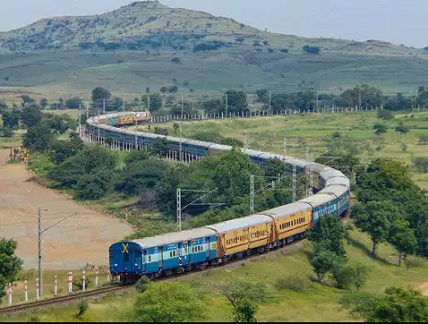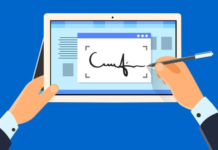
Globally, the Indian Railways manages the fourth largest national railway system. Red Hill Railway, the first transport train in India, ran in 1836, and since then, Indian Railway has come a long way. At present, its total route length is 58,000 km. The Indian Railway is not only expanding geographically but also digitally. At present, the prime focus of Indian Railways is to create a user-friendly mobility system for which digitization is essential. Previously, the Railway Minister has acknowledged that with technological input, it is possible to improve the railways further. Since then, digital technology has been in high demand in Indian Railways. Here is how digitization is transforming Indian Railways.
1. Real-Time Train Information System
Indian Railways, with the help of ISRO, has created Real-Time Train Information System or RTIS. It helps the Indian Railways prepare a computerized chart and the passenger train data. Furthermore, the railways also now employ automated management charting for over 6,500 locomotives, reducing the railway employees’ manual burden.
2. Improved Customer Experience
Digitization has enabled Indian Railways to improve the customer experience. The customer experience enhancement begins even before one steps inside a train. For example, from the comfort of the home, one can check the PNR Status to know about the various details of the booking. Inside the train, one now encounters an emergency talk-back system, automatic step control, and a WiFi infotainment system.
Also, Indian Railways is now on its way to creating tailored coaches based on passenger tiering and train quotes. The solution focuses on giving the passengers a detailed cabin exploration.
3. Digilockers
One of the most successful ventures of digital transformation in the Indian Railways is visible in the form of Digilockers. With the help of the digilockers, the passenger can store their luggage easily while traveling simply by providing basic information. After the introduction of digilockers in the Central railway, the concept soon gained popularity amongst the passengers.
4. Common Service Centre (CSC) Kiosks
PSU-RailTel will soon set up CSC kiosks in over 200 stations nationwide. Once implemented, it will allow passengers to book different kinds of traveling tickets, pay electricity bills, and recharge their mobile phones. Most of these services will be set in rural areas to benefit the rural population the most.
5. User Depot Module
The Center for Railway Information Systems has developed the User Depot Module or UDM to digitize the railway supply chain. It will assist in transforming manual working into digital working. Bringing in online information exchange data and real-time transactions for all the stakeholders will help bring efficiency to the supply chain. Furthermore, it will also help in asset management.
6. Unreserved Ticketing System
Indian Railways have combined Modern Train Control System and Long Term Evolution based Mobile Train Radio Communication to create Unreserved Ticketing System (UTS). This system will automatically make the unreserved tickets available to the passengers of the rest station. This digital transformation helps bring efficiency and higher revenue to Indian Railways.
7. Rolling Stock
Using platform-based 3D technology, Indian railways are reducing the cost of traditional manufacturing of railway coaches. The technology enables the manufacturers to virtually model, simulate, analyze, and, if required, further improve the railway coaches. Under the “Make In India” scheme, Indian Railway is using 3D printers for designing and printing different coach components as required.
8. Advanced Signaling
The European Train Control System is now used for advanced electrified route signaling. This system provides the system with information such as the train’s speed limit. The data allows drawing a comparison between the actual and permitted speed limit, subsequently improving the punctuality and safety of the train.
In addition, the government is planning to use Building Information Modelling to modernize more than 8,000 railway stations with railway-signaling systems. It will improve data communication between the different stakeholders, which will help solve issues quickly.
9. HRMS Employee Mobile App
HRMS Employee Mobile App or HEMA is an app available on the Google Play Store which is designed to benefit the employees of Indian Railway. The app will enable the employees to access different services and further contact relevant authorities if they need help. The Indian Railway employs over 1.3 million people, and therefore, the app will benefit many people.
Digitization is an ongoing process for Indian Railways, and the government is working full-fledged towards it.



















